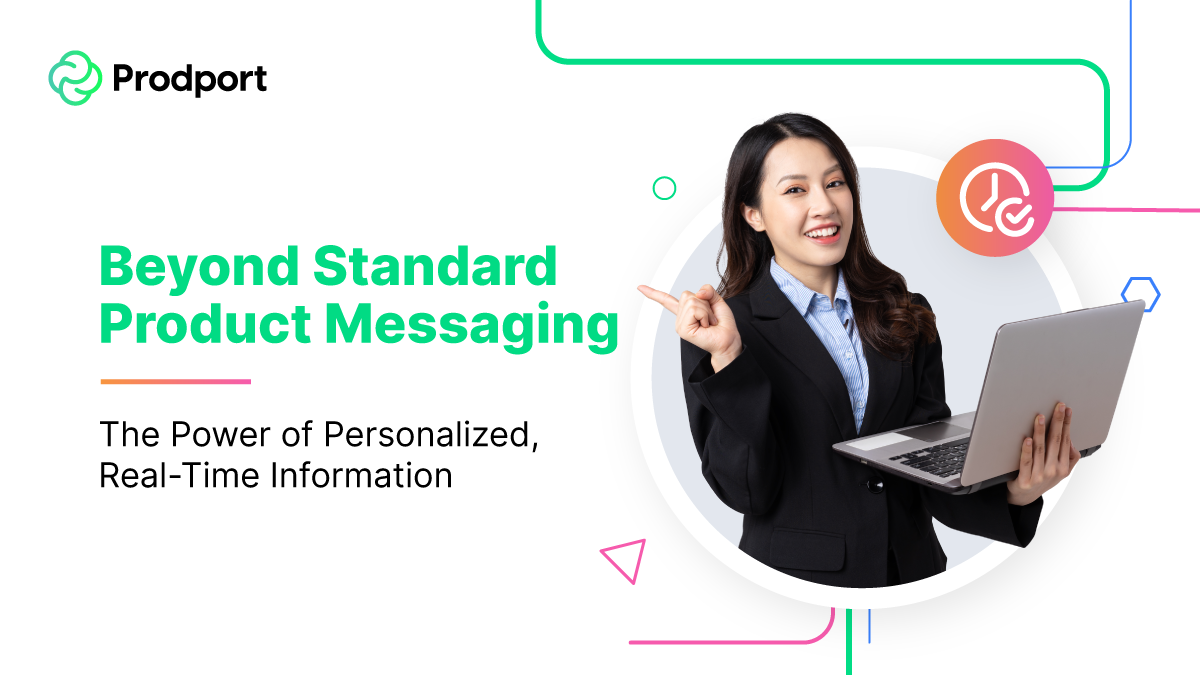Product messaging is in the midst of a transformation – driven by artificial intelligence and tools like ChatGPT. Many companies believe that crafting the perfect product message ends with creating a good prompt. However, this perspective oversimplifies a process often fraught with many other challenges.
So, how to speak to your customers so that they will truly believe that your product is “the one”?
This guide will walk you through the product messaging essentials of a product marketer. It shows you the power of personalization to resonate with your audience. Are you ready to discover how compelling product message can be?
What is product messaging?
Product messaging is how you communicate your product value to the target user. It emphasizes the key benefits and outcomes. It indicates how well prospective users can understand what the product offers. And how it can solve their problems.
Why does personalization matter in product messaging?
“Treat me as a person, not a number.” It’s one of the statements in the latest Salesforce report about customer engagement.
A thoughtful approach builds trust, not an anonymous system. It’s the first reason why personalization matters in the case of product messaging. Your prospective users want to see how the product can improve their real life – not the neighbor or person from the other side of the globe. And personal approach is the thing that convinces them most to trust your brand.
Product messaging is important because it shows how you want to be seen. It shows your product in the best light, defines your company, and makes people believe it resolves their pain points. And as a result – choose your product over those of your competitors.
👨 Tailor product messaging to the particular target audience. Put your best product values on the plate and give your customers real-time information on why they should choose your product over others. Implement Prodport and make your product messaging more personal than ever before.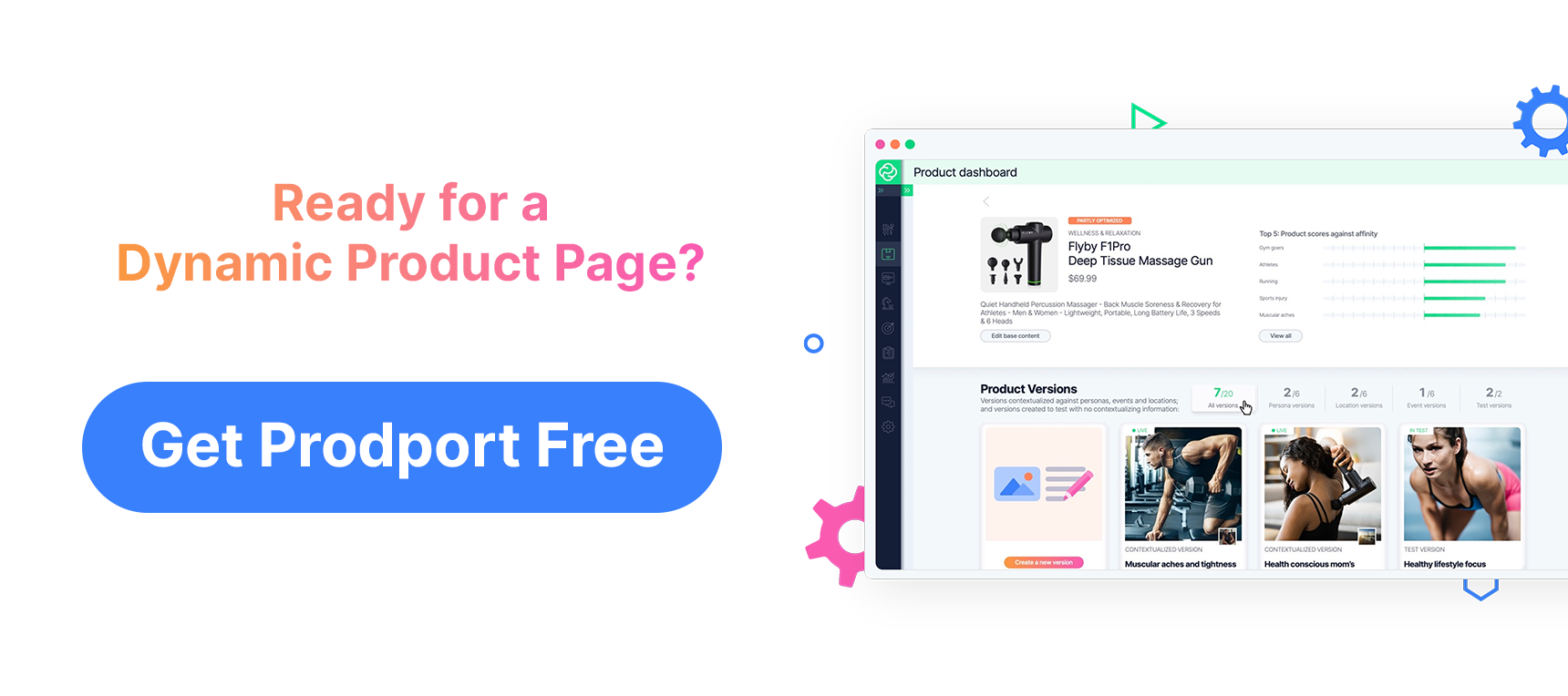
5 steps to create personalized product messaging (+successful product messages examples)
A business pain is that many product teams get product messaging wrong, and this is caused by two main reasons:
- They struggle to convey the real value of their product to potential customers, often missing the point of communicating what truly sets them apart.
- Their messaging tends to sound too salesy or pushy, which can diminish its impact, decrease customer retention, and leave the audience feeling pressured rather than engaged.
Take these five steps to create a consistent message that will make your audience feel the value of your product.
1. Identify a highly compelling Unique Selling Proposition (USP)
Understanding core value propositions and what makes your product unique and better than the competition is the foundation of your messaging. You need to find something that makes you specific on the market. The quality and the price are not these things. Here’s why.
There are many businesses that, after product launch, fall into the trap and offer the best quality and the best price or the highest quality with the lowest price at the same time. The problem is that it’s impossible to have the cake and eat the cake.
Identify the key differentiator that sets your business apart from your competitors and help you find your product messaging positions.
💡 Product messaging example: Oplotka
Oplotka sells handcrafted jewelry, and its USP is craftsmanship and using sustainable materials. It shows the whole process in its messaging and demonstrates to its audience that every product is unique. Their messaging emphasizes these common elements and attracts those who value exclusivity and transparency. Such factors can help it as a smaller business steal some solid market share from its larger competitors.
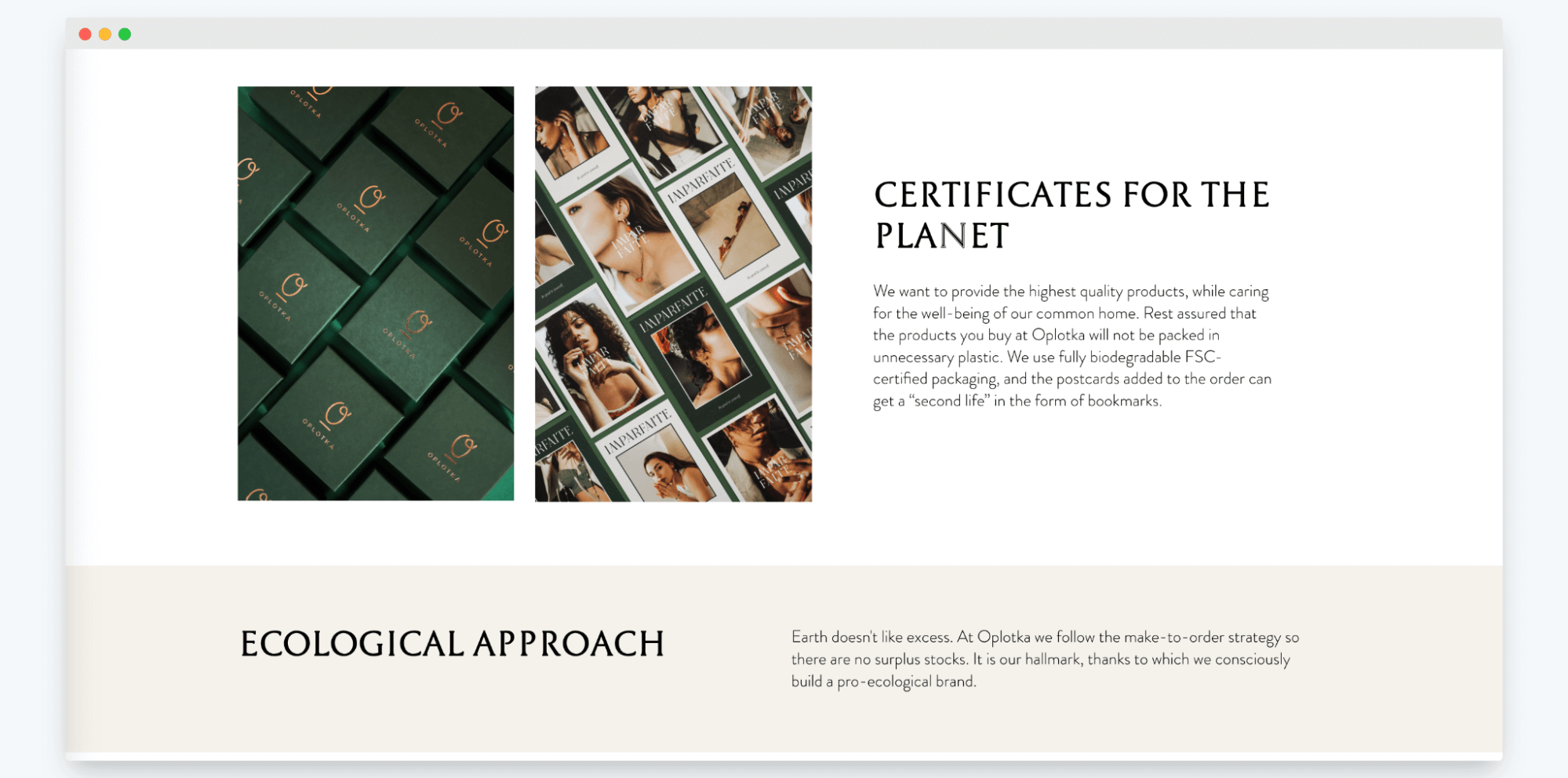
Source: oplotka.com
How to identify your Unique Selling Proposition (USP)?
Your current customer base and honest feedback is the best source of information about your brand. Ask them questions during customer interviews or customer surveys:
- Why do they return to you and continue doing business with you?
- Why did they decide to stop buying from you?
You can accurately determine the behavior and preferences of your target market by using customer surveys, customer feedback, and other market research tools. You can also do a SWOT analysis to identify your organization’s Strengths, Weaknesses, Opportunities, and Threats – it’ll guide you to pinpoint your product positioning.
2. Craft product messaging that resonates with your target audience
You should always target your product messaging for a specific audience and have a clear picture of your ideal customer in your mind. Know your target market’s needs, wants, pain points, and aspirations. Your product messaging should speak directly to the above, offering straightforward solutions and benefits for users. Avoid jargon or overly complex language that can confuse prospective customers and discourage them from purchasing decisions.
💡 Product messaging example: Revolut
Revolut is a neo-bank technology for money management that aims its product to many different users – travelers, young adults, business people, and entrepreneurs. And their content creators know how to speak to each of these groups. Revolut shows the particular product benefits, depending on the recipients. See how.
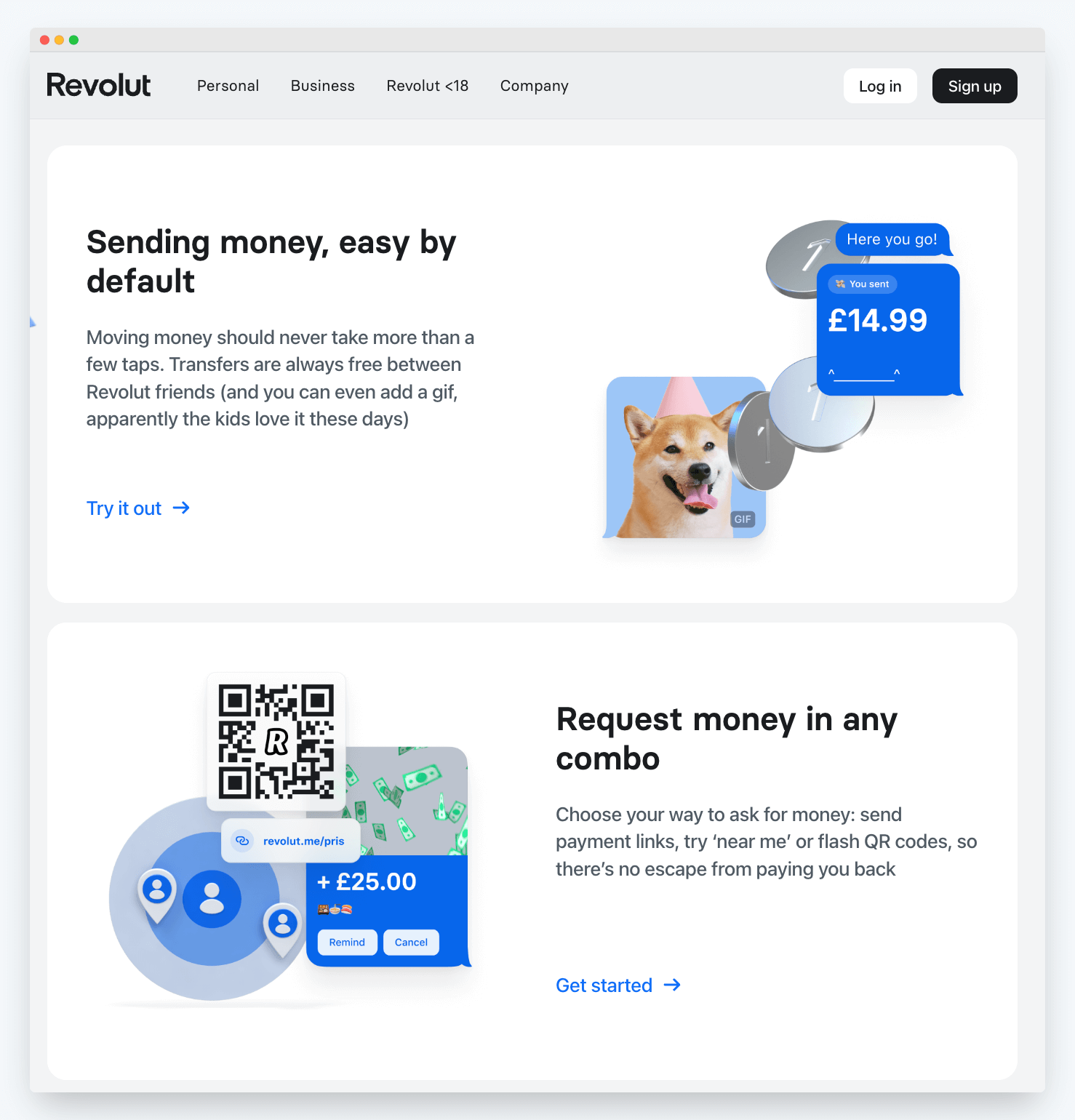
Source: revolut.com
Revolut made the target audience research well – they know which features count most for particular users. Product messaging for businesses has a different tone of voice and highlights different benefits of its app. Users receive personalized marketing content that can encourage them to sign up.
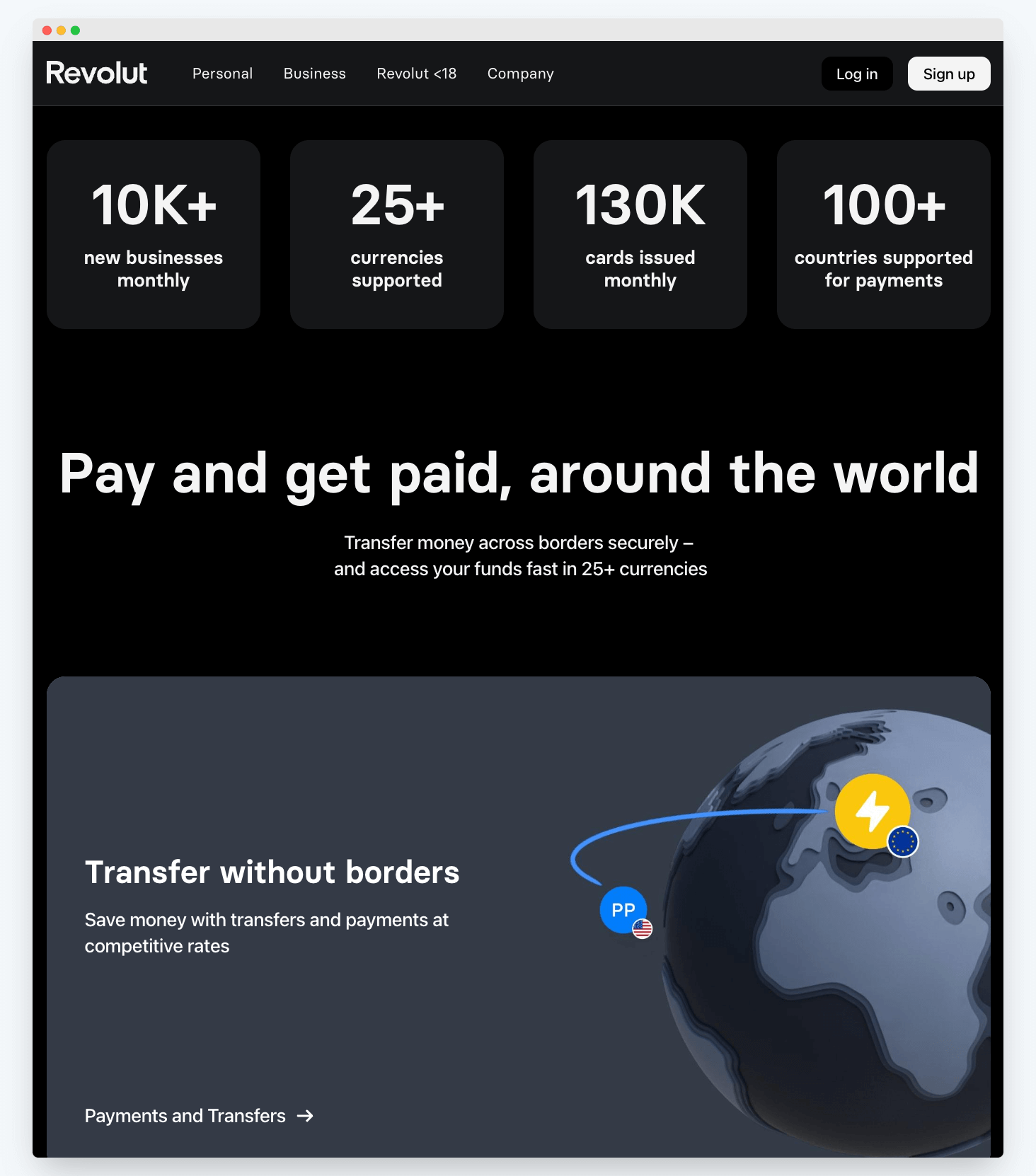
Source: revolut.com
How to craft product messaging tailored to your target audience?
Develop primary user personas and ideal customer profiles and use them to shape your messaging. You get insight into your funnel visitors’ behaviors and their buying habits.
- Conduct surveys and interviews with existing customers to collect insights into their preferences and behaviors.
- Divide your customer base into segments based on shared characteristics and interests. Prioritize those that have the most impact on your business.
- Understand the goals your buyer personas are trying to achieve and the challenges they face.
➡️ For more information on creating buyer personas, check out our other article about creating personalized product pages.
3. Use tools like Prodport for deeper personalization
Tools that let you personalize product pages with real-time information can further strengthen your messaging. Personalization is not just about addressing the customer by name – it’s about presenting the most relevant content, offers, and recommendations based on their behavior and preferences.
💡 Product messaging example: Kahlmi
Kahlmi implemented dynamic product pages powered with Prodport to deliver relevant product messaging to the right customers. When a customer browses a baby-related problem, Prodport can automatically highlight product features that solve this problem.
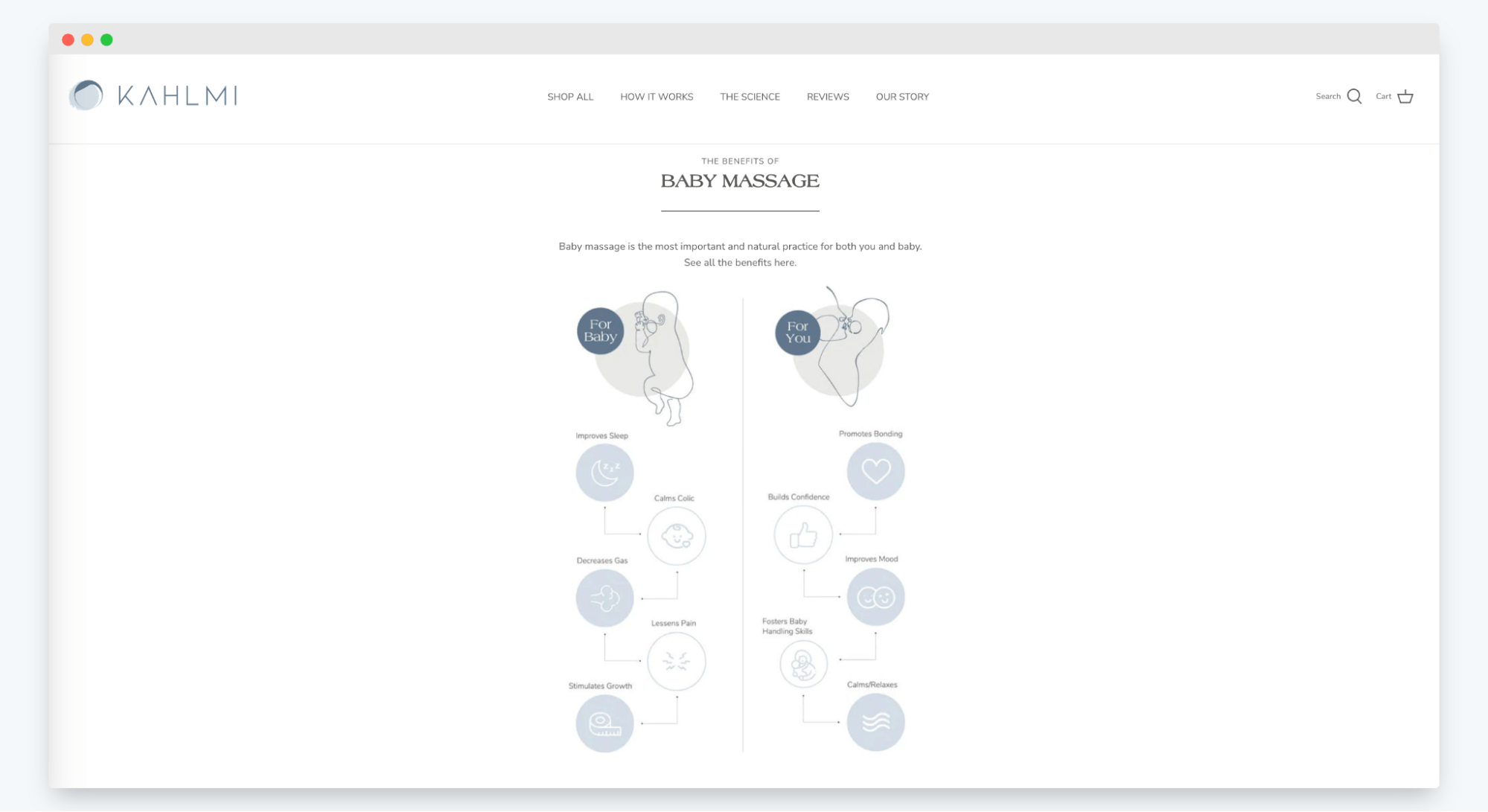
Source: kahlmi.com
How to deepen product messaging?
Prodport provides advanced segmentation that precisely targets your audience using comprehensive criteria, e.g., traffic sources, location, behavior, and date. This solution allows you to create even more personalized product messaging on your product pages.
- Connect Prodport to your store for free and accept Shopify’s partner app request.
- Select the product page to test. Prodport will automatically create three different versions of your product pages to run the live test and see which performs best.
- Optimize your content and gain insight into audience bounce rate, time on page, and many other metrics.
4. Avoid aggressive sales tactics
While it’s natural to want to promote your product enthusiastically, avoid language that feels pushy or even aggressive. Instead, focus on educating the audience about your product and how it can solve their problems or enhance their lives.
Instead of saying, “Buy now! Limited stock!” you might say, “Discover how our product can make your daily routine easier.”
💡 Product messaging example: Hairlust
For example, the Hairlust online store, instead of bombarding customers with urgent “Buy now!” messages, offer a hair test to provide personalized product recommendations. It empowers customers to take control of their hair care user journey. A creative, simple way to overcome the problem of being too salesy. “Fill out the test, we show you which product can help you.” A clever tactic to create a product messaging strategy that drives meaningful engagement without too many sales pitches.

Source: hairlust.com
What can you do to avoid aggressive sales tactics?
Focus on benefits rather than product features. Instead, opt for a more customer-centric approach that builds trust and provides value. Here’s how you can navigate this delicate balance:
- Educational approach – differentiate yourself from the competition by market positioning yourself as an educator. Provide valuable information about your product, its features, and how it can address specific pain points.
- Solve, don’t sell – focus on solving your audience’s problems. Address their pain points and offer your product as a solution. For example, if you’re selling home cleaning products, you might discuss the challenges of maintaining a clean home and then introduce your product as a convenient and effective solution.
- Tell stories – share relatable stories and customer experiences that demonstrate the real-world impact of your product. This allows potential customers to connect emotionally and envision how your product could fit into their lives.
👩🏼 Use language that centers around your customers. Phrases like “you,” “your,” and “for you” create a personal connection and show that you’re genuinely interested in helping your customers.
5. Develop a product messaging framework
All of these points lead you to the final step – developing a product messaging template. Crafting an effective product message requires a structured approach. Thanks to that, you can achieve consistency and clarity across all communication channels.
It’ll be your manual for your product marketing strategy and helps convey your product’s value proposition to your target customers. Developing a product marketing messaging framework takes time and effort, but it provides a roadmap for a successful product messaging strategy.
💡 Product messaging example: Apple
One brand known for its exceptional product marketing messaging framework and consistent communication across all channels is Apple. Apple’s messaging is famous for its simplicity, clarity, and emotional resonance. Their product messaging consistently emphasizes how their solutions make people’s lives easier and more enjoyable.

Source: apple.com
In a product marketing messaging framework, what are the key messaging elements?
LinkedIn stresses these four key elements of the product messaging framework. It’s time to put them all together.
- Product vision – the top-level statements of your product, who it is for, and why it exists.
- Value proposition – the specific benefits your product offers. It should answer one core question – why should your customers choose your product over others?
- User segments (along with buyer personas) are the groups of people who share the exact needs, goals, and current pain points that your product resolves.
- Messaging pillars – 3-5, each with an impactful product headline, a subheading, and a proof point. They should be determined based on what your product offers your customers regarding features, product benefits, and outcomes.
The 3 C’s model to product messaging that change the way you speak to your customers
A robust product messaging strategy is incomplete without integrating the 3’C model. This framework (widely employed in brand messaging) is equally effective when crafting product messages. Stick to these principles to maximize the impact of your words.
Here’s what’s behind the 3Cs.
First C like Consistency
In product messaging, consistency is vital. Your sales team and content teams should all share a consistent message. Whether it’s your product marketing content, messaging hierarchy, or key messages, maintaining a uniform voice and tone across all communication channels reinforces your brand identity and builds trust with your audience.
It applies to your online stores and marketing emails and your interactions with prospective buyers throughout the sales funnel. Consistency ensures that your customers have a cohesive experience, from initial engagement to the final purchasing decision.
And remember – don’t be overly promotional. A customer takes a long time to find, but only a few seconds to lose.
Second C like Clarity
A product marketing manager has to take care in crafting a positive product messaging strategy that is clear and concise. Product core functionality, benefits, and core differentiators should be communicated with precision.
The story of success is focused on one single key message – so that the potential users have no doubts about what your product does and which issues it resolves.
Note: Product messaging isn’t limited only to websites. It includes email marketing as well. Focus on email simplicity to lead the readers directly to purchase decisions and make every word count!
Third C like Character
The character of your product messaging sets the tone for your brand. It reflects your core values, unique selling points, and the emotional connection you establish with your audience. Humanize your messages and treat your customers as people, not deals.
Such a character gives your message authenticity. It should extend across all aspects of your product marketing strategy – from user segment targeting to the development of customer-focused messaging. This way, you create a memorable, relatable experience that captures attention and drives engagement.
Boost sales with personalized product messaging
Product messaging goes beyond the basic exchange of information – it involves building a connection, evoking emotions, and guiding your audience to understand your product unique value.
The trick is to deliver all these at the right time and moment to create a frictionless product experience.
This is something Prodport can help content marketers and product marketing teams with.
Build product pages for each audience, customize and optimize the content, and use Prodport AI to generate compelling messages. See a live product demo.
